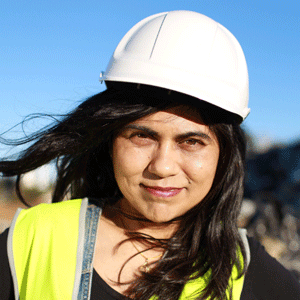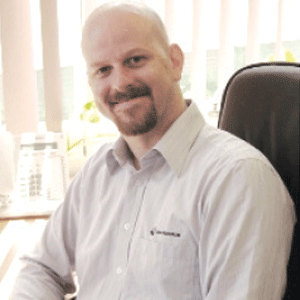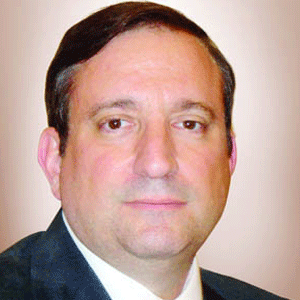THANK YOU FOR SUBSCRIBING

Veena Sahajwalla, Director, SMaRT Centre, UNSW Australia
I have an unusual interest in information technology. For all the rapid improvements in processing speeds, design and functionality, my particular fascination is with the masses of equipment and the vast swathes of IT infrastructure that so quickly become redundant and are thrown away.
‘E-waste’ is one of the fastest growing waste streams worldwide, not just in affluent industrialised nations but in the developing world, where the proliferation of mobile digital devices has enabled once IT-poor communities to readily connect. The US$1 trillion plus global electronics industry generated about 42 million tonnes of obsolete equipment in 2014 alone, according to a recent United Nations Environment Program (UNEP) analysis. Much of this was destined to contaminate our landfills. This, in my opinion, is an entirely untenable and unnecessary waste.
The term ‘e-waste’ itself is something of a misnomer. Certainly, we are faced with growing mountains of end-of-life electronics and there are real technical challenges in dealing with them. However, e-waste should, and could, be a very valuable source of secondary resources for production. Embedded in e-waste is a wealth of precious and base metals and other potential resources. E-waste is, for example, between 10-20 Percent copper, compared to up to a 3 percent concentration of copper in virgin copper ore. A tonne of mobile phones - about 6,000 handsets – contains about 130 kg of copper, 3.5 kgs of silver and 140 grams of palladium. Globally, the UNEP calculated that the resources embedded in 2014’s e-waste alone was worth some US$52 billion. That’s the push side; e-waste recycling should be a very profitable global business.
On the environmental side, too, there are very significant incentives to do better than merely throw outdated technology away.
Then, there’s the risks: the hand processing of e-waste poses to the health and environment of poor communities. The modest percentage of the world’s e-waste that is currently recycled is mostly processed unsafely in developing countries, especially China and India. Some large scale, high cost industrial facilities do safely process e-waste, especially in Europe. However, while metals are effectively recovered other wastes, like waste plastics and glass, remain untapped. And, it’s expensive, so much e-waste is diverted to developing countries.
As a materials scientist and engineer, I have been thinking about waste solutions for many years. I grew up in India, and as a child I used to walk to school every day past the mountains of waste that are raked over by India’s desperately disadvantaged rubbish picking communities. I have spent my entire research career looking for scientific and technical solutions that also meet ‘real world’ needs. That is, solutions that are both commercially viable and are compatible with our current industrial infrastructure, so that they deliver economic and environmental benefits, thereby driving change. For e-waste, I wanted to developed a low cost, small scale e-waste recycling facility that could be deployed anywhere in the world; in remote rural Australian towns, on the edge of waste stockpiles in India and even right in the middle of modern cities. Instead of massive and expensive efforts to collect and ship e-waste off to large processing facilities, or dangerous hand processing, we could recover the wealth of resources in e-waste locally, and feed them back into industrial production, either locally, or through the global supply chain.
And, we’ve done it. Our micro recycling research facility at the University of New South Wales is safely transforming printed circuit boards – a ubiquitous component in e-waste - into high value metal alloys, demonstrating our unique low cost solution. This is a critical first step. My ultimate goal is to ensure every material within e-waste is transformed for reuse, so that nothing of value is thrown away.
By leveraging high temperature reactions, we are able to literally ‘reform’ all kinds of wastes into useful new industrial inputs. As high temperature processing enables pure gases to be generated we can then selectively react the gases to produce resources or inputs specifically tailored to industries’ needs. For example, develop a process that transforms carbon-rich waste tyres in the production of high quality steel, now in use in commercial steel operations in Australia and internationally.
High temperature reactions have proven extremely useful with e-waste, too. We are using precisely controlled high temperature reactions to produce valuable copper and tin-based alloys from PCBs, while simultaneously destroying toxins.
A safe, low cost, small scale processing option for e-waste is critical, not only for the world’s waste industries and for the planet’s future - but for our IT innovators, industries and users. The rate at which e-waste stockpiles are growing cannot be sustained, nor can the daily squandering of the wealth embedded within. We are clever enough to be transforming the world with IT. We are also, certainly, clever enough to understand its end of life value and to safely and cost-effectively recover its riches.











